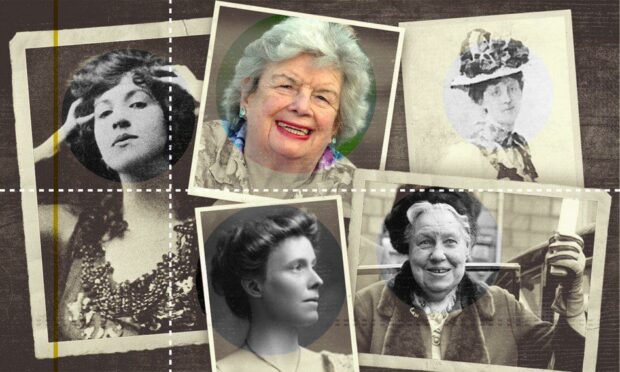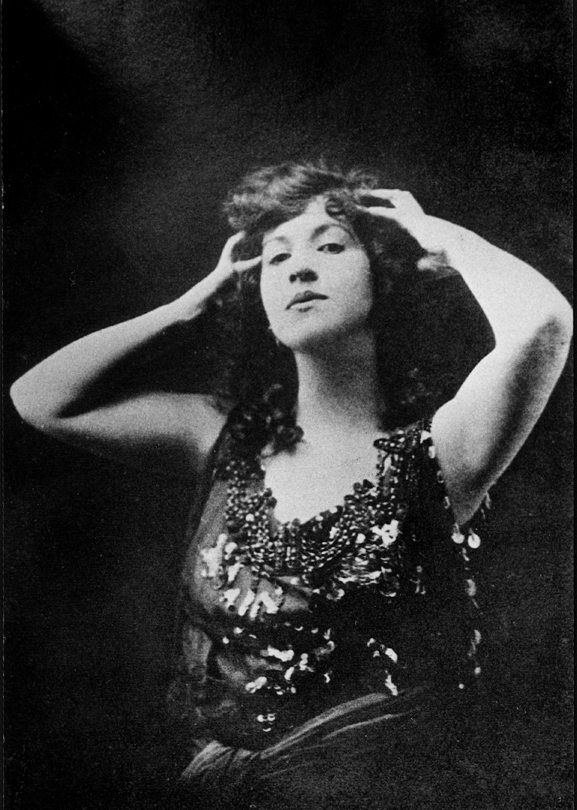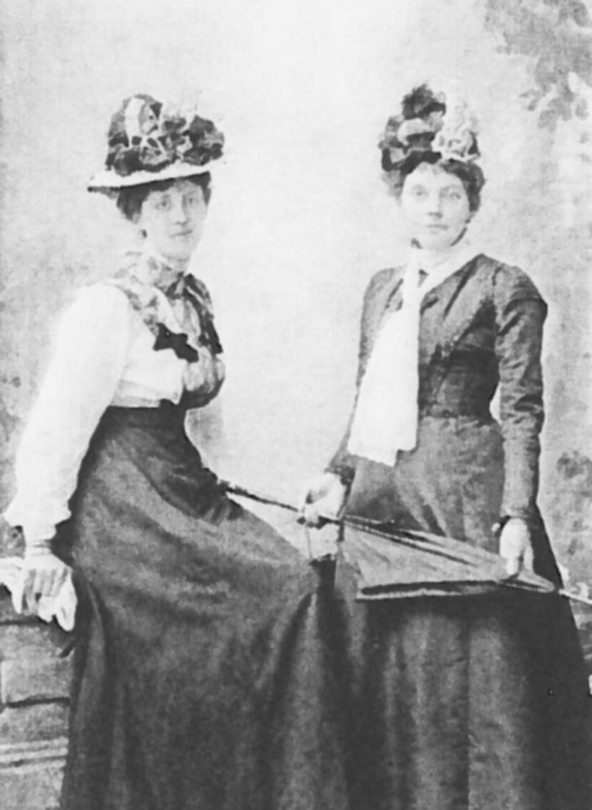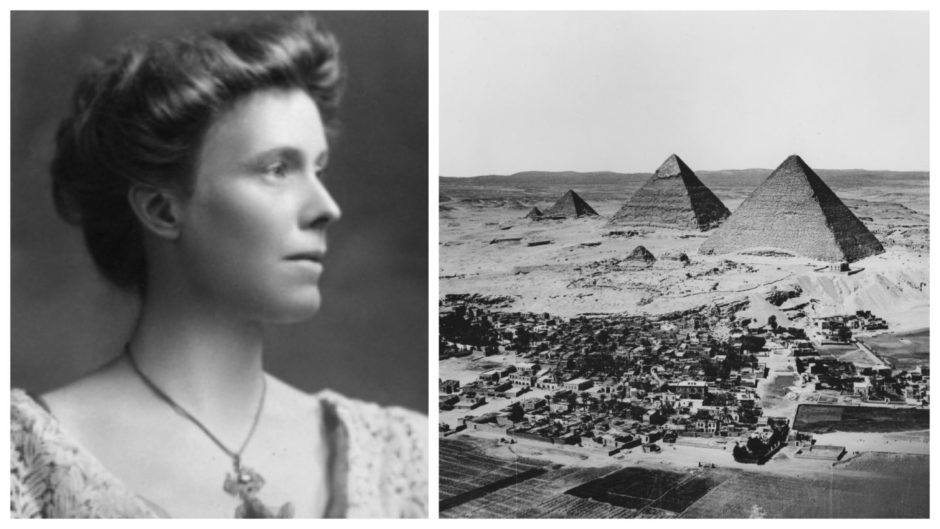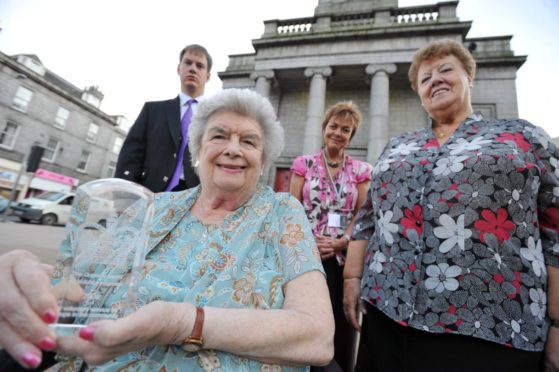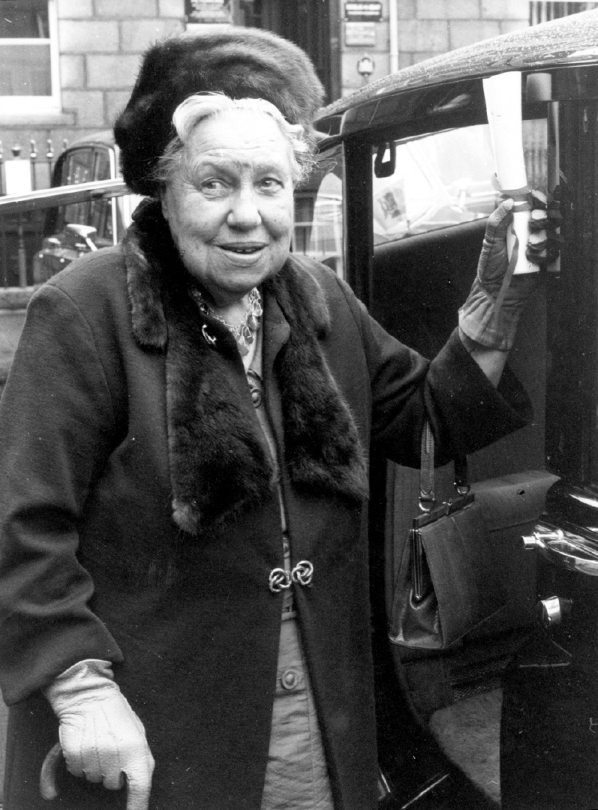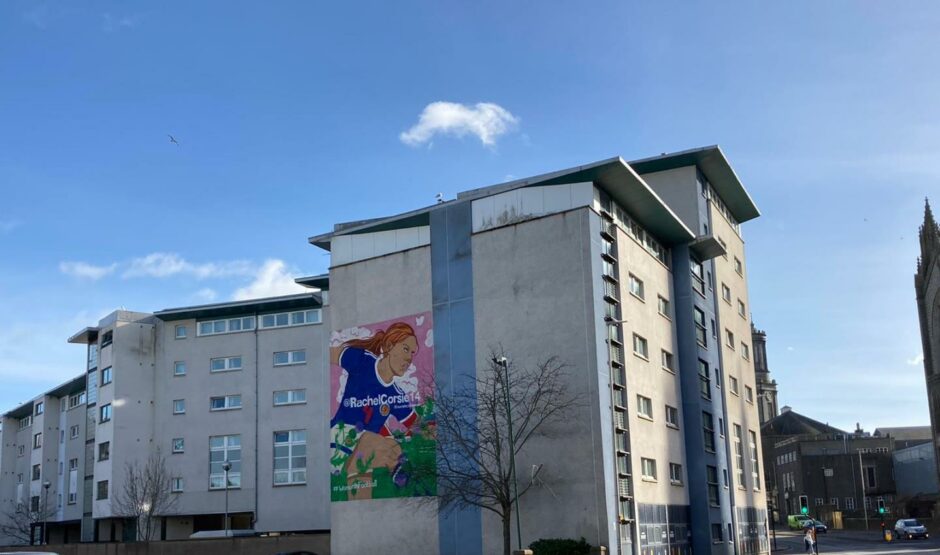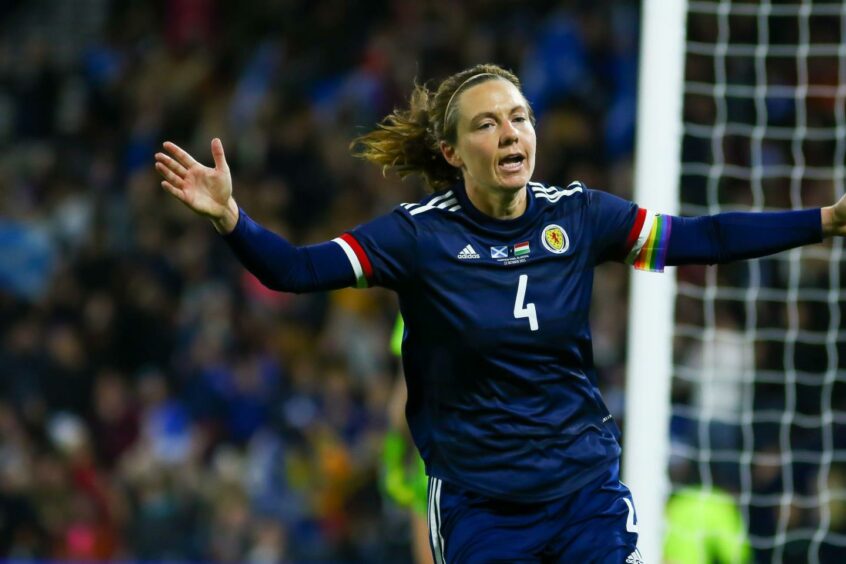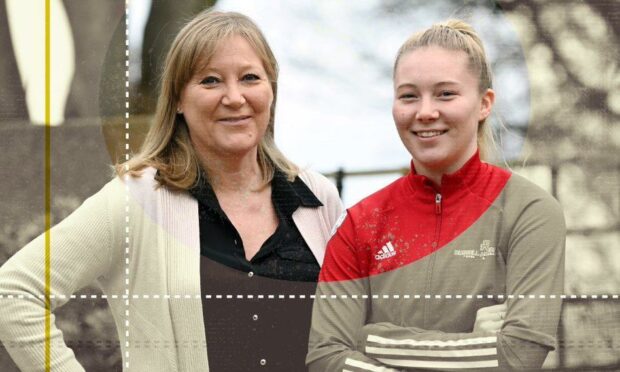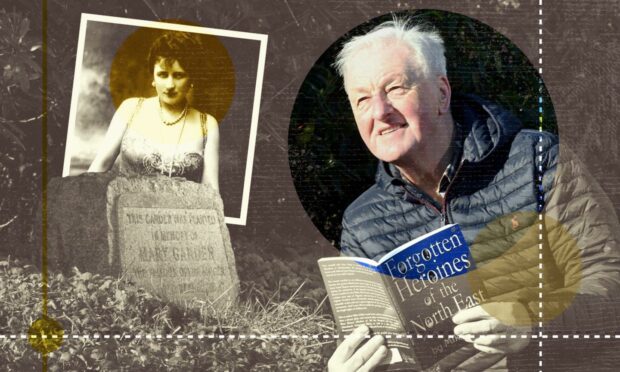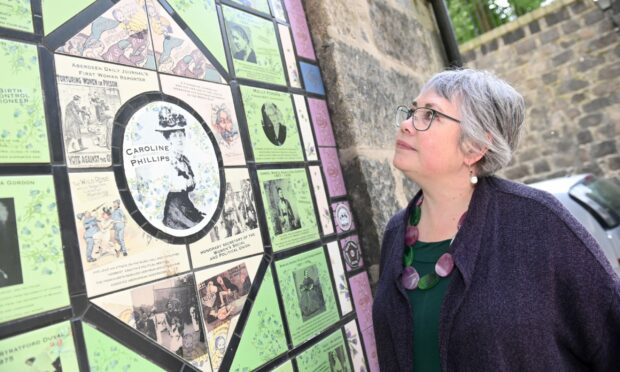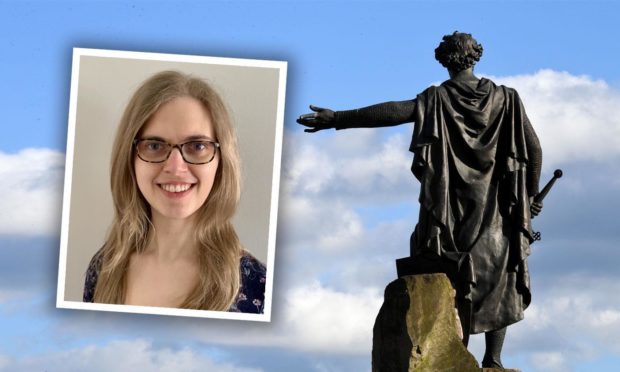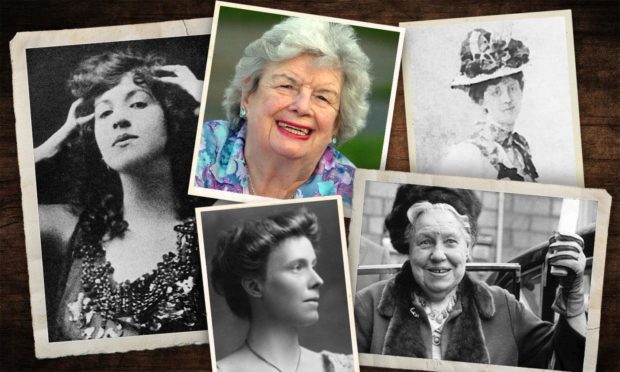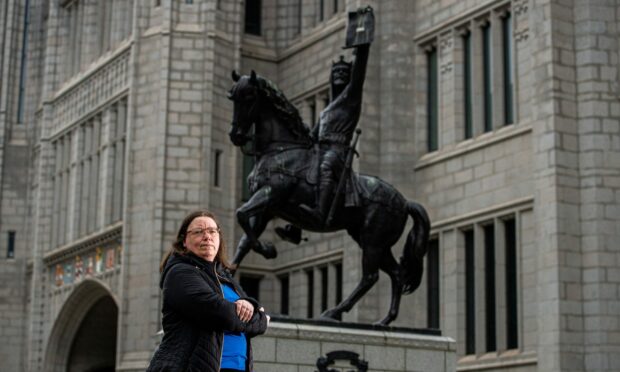Here we have gathered just a small selection of Aberdeen’s historic and modern days heroines who warrant being celebrated.
They are far from the only figures worthy of recognition, though, and we are keen for readers to get in touch with their own suggestions via the form at the bottom of the page.
Lorna Moon (1886-1930)
Helen Nora Wilson Low, better known as Lorna Moon, was a journalist, novelist and screenwriter born in Strichen.
In 1921 she moved to Hollywood and became a scriptwriter for Cecil B De Mille.
Aberdeen writer Mike Gibb chronicled her life in a book released a few years ago.
Mr Gibb said: “I believe that if she hadn’t died so young – in 1930, aged 44 – she would have gone on to become one of Scotland’s great literary figures and would now be revered like Lewis Grassic Gibbon rather than being largely unknown.”
You can read more about Lorna here.
Caroline Phillips (1870-1956)
Caroline Phillips was born in Kintore and moved to Aberdeen in 1874.
She became a journalist alongside her brother and worked at the Aberdeen Daily Journal from 1900.
A suffragette, she joined the Women’s Social and Political Union (WSPU) and was honorary secretary of the women’s branch from 1907 to 1909.
Around that time, she organised a train to take suffragettes from Aberdeen to Edinburgh to participate in a suffrage demonstration.
Some of her correspondence is kept archived in the city, including some with the Pankhursts.
In 2019 a plaque was put up on her former Union Street home.
You can read more about Caroline here.
Nora Griffith (1870-1937)
Nora Griffith’s trailblazing talents took her from Newmachar to the Nile.
The Egyptologist founded the Griffith Institute, at Oxford University, a world-renowned centre for research.
Her interest in the subject was sparked on a trip to Egypt in 1906 and led to her becoming a conservator in the archaeological museum of King’s College, Aberdeen.
Abeer Eladany, a museum curator and an Egyptian archaeologist at Aberdeen University, recently praised her work.
She told us that Nora was “a pioneering Egyptologist who joined the field of Egyptian Archaeology at a time when it was dominated by male archaeologists”.
You can read more about Nora here.
Annie Inglis (1922-2010)
Annie Inglis felt like a family member to generations of Aberdonian youngsters who knew her as “Granny Annie”.
She dedicated her life to teaching and inspired many budding performers to take the stage.
Annie, who was born in Lanarkshire, moved up to the Granite City in 1953 after studying English at Glasgow University.
She taught phonetics at Aberdeen College of Education and developed the amateur Attic Theatre Group in 1957.
One of her major achievements as a doyen of the city’s cultural scene was helping to save Aberdeen Arts Centre from closure in 1988.
Read more about Annie here.
Mary Esslemont CBE (1891-1984)
Aberdeen Women’s Alliance convener Fiona Rennie refers to Mary as “the mother of Aberdeen”.
The granddaughter of one of the founding partners of iconic store Esslemont and Macintosh, she was born in 1891 and granted the Freedom of Aberdeen in 1981.
After attending Aberdeen University, she taught science in London before returning to the city to study medicine.
She worked as a GP with an interest in gynaecology, prenatal care and family planning and did much to improve the wellbeing of mothers and babies during her decades as a cherished citizen.
You can read more about Mary here.
Rachel Corsie (born 1989)
Rachel Corsie is one Aberdeen woman who is honoured in the city – in the form of a massive mural beside the Morrisons supermarket on West North Street.
The captain of the Scotland women’s team, who plays for Aston Villa, has amassed more than 100 appearances for the national side.
Growing up in Aberdeen, attending both Hazlehead Primary and Academy, she developed her love for the game from her father and brother.
She continued her journey at RGU, setting up the university’s first women’s team on her way to accumulating 115 caps for the side.
You can read more about Rachel here.
Ongoing efforts to highlight heroines
With the continuing work of Aberdeen Women’s Alliance, plenty more is being done to highlight various other women whose exploits may have unjustly gone unnoticed in their own time.
And walking around Aberdeen’s new Hall of Heroes at Provost Skene House offers some illuminating insights into female figures.
Annie Lennox, Dame Evelyn Glennie, Annie Inglis and May Baird are all given pride of place in a stunning lights show at the entrance.
Many more are celebrated in various displays on the upper floors.
Now we want you to tell us who you think deserves some extra recognition…
Do you want a statue of Annie Inglis outside Aberdeen Arts Centre?
Would Caroline Phillips inspire a new generation of female journalists from a plinth in Aberdeen city centre?
Does Nora Griffith deserve to be carved in stone?
Or should someone else entirely receive some public praise? Let us know!
